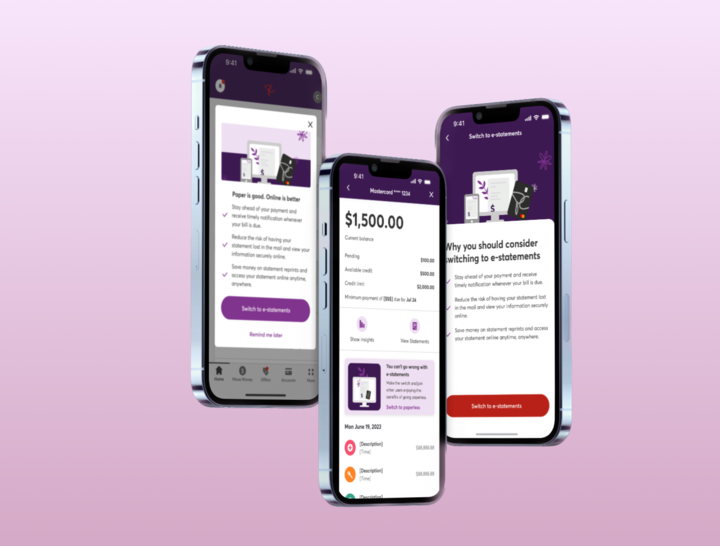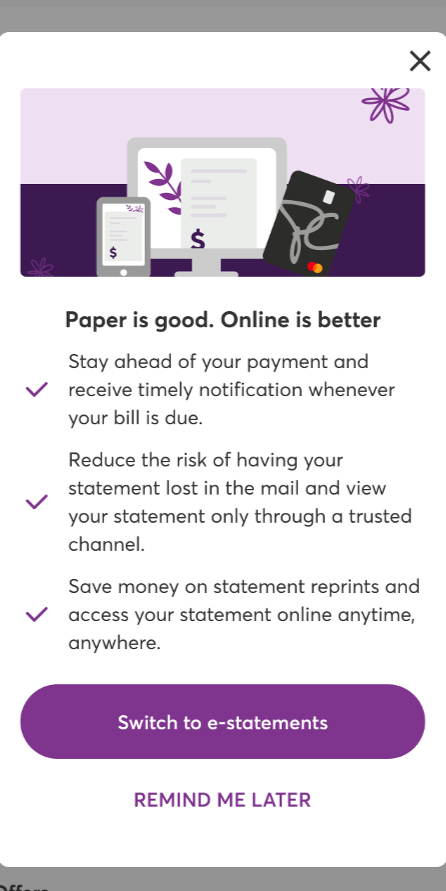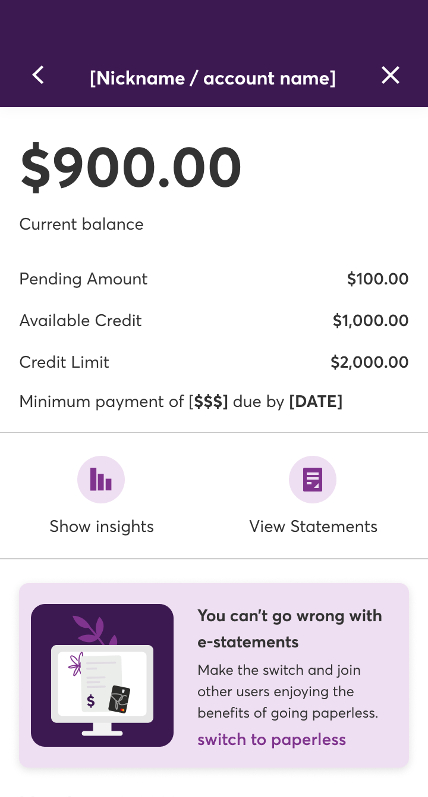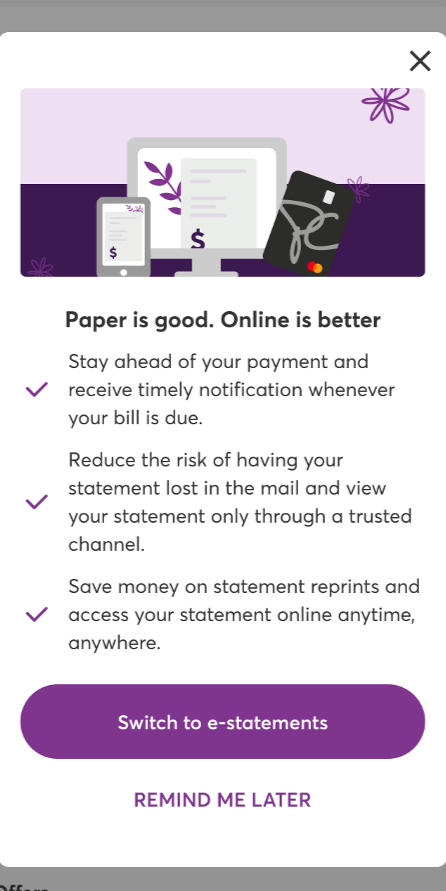From Paper to Paperless

Introduction
PC Financial is a digital financial organization providing credit cards and banking services to its users. Designing content in the Fintech industry can be challenging due to regulatory constraints and the necessity to simplify complex financial concepts.
Background
The business wanted to convert more users to switch from receiving paper statements to online statements. Online statements are more convenient, faster and will save the business about $120,000 annually.
Previously, they had adopted a few ways to motivate this switch, such as marketing campaigns but we realized that they weren’t giving us the traction that we wanted.
Requirement
I was tasked with creating a seamless experience and providing content on our digital platforms that will motivate users to make the switch. In addition to this, I was also responsible for figuring out a strategic placement for the content within our mobile app and website.
What I did
- Use research
- Stakeholder Engagement
- Writng for different screens
- Identified strategic placements for copy across our digital products to maximize visibility and engagement
User Research
It was important to get insight from users who were enrolled in paper statement. I wanted to understand their preferences and possible motivations that will encourage them to switch to e-statement. I conducted a moderated user research with 10 participants asking that relevant questions that birthed the insights below.
Insights from users:
- Users valued the convenience, speed of accessing e-statements but concerns were raised about safety, in the event of their account getting compromised.
- Many users were open to switching if the process was straightforward, data security was assured and the benefits of switching clearly highlighted.
- I also realized through research that negative reinforcement or shaming was ineffective. Users didn’t want to be shamed for their decision
Stakeholder Management
I collaborated with stakeholders to align on business needs and requirements, which involved clarifying the scope of the project and discussing tech feasibility. I also incorporated feedback from stakeholders to refine copy.
The fun part: Writing
Using insights from the research, I crafted copy I was confident would resonate with users.
Tone of voice and Messaging
My approach was to avoid shaming them for their choice to receive paper statements, but instead encourage them to make the switch by highlighting the benefits that come with it. This guided the tone of voice throughout the journey—positive and encouraging.
Call to Action
It was important to respect users’ choices, while also providing them with an option to make the switch seamlessly.
- The 2 CTAs on the screen served this purpose. If users clicked ‘Switch to e-statement’, they were taken directly into the flow and provided with a success screen that established next steps.
- If they clicked ‘Remind me later’, users will be presented with the pop-up messaging after their 5th login.
Placement for copy
Leveraging data:
Working closely with the Data Analysts on the team, I reviewed user interaction data to identify the most frequented and engaging sections of the app and website.
Together, we pinpointed two strategic touch points that we believed would maximize exposure to the messaging and effectively encourage users to enroll in e-statements.
These touchpoints were the Dashboard and Transaction Page
Design And copy




Results
immediate Impact
Within the first month post-implementation, there was a 13% increase in users switching to e-statements.
Business Benefits
The business achieved significant cost savings, meeting and exceeding the projected annual savings of $120,000.
User Satisfaction
Users responded positively to the benefits highlighted in the messaging, which significantly influenced their decision to switch
Learnings
Working on this project taught me that understanding and addressing user motivations and barriers are critical for driving behavioral change. Most importantly, it reinforced that the impact of effective communication can never be overemphasised.
Additionally, the importance of data in identifying high-traffic areas significantly contributed to the project’s success.
Despite the success of this project, one key lesson for me was the importance of adopting a mindset of continuous improvement. Moving forward, I aim to be more proactive in monitoring projects post-launch to ensure the ongoing relevance and effectiveness of the content and design.
Conclusion
The e-statement Migration project successfully leveraged user research, clear, concise, intentional copy, and thoughtful design to drive a substantial shift from paper to electronic statements. This transition not only delivered considerable cost savings for the business but also enhanced the overall user experience by providing a more convenient and efficient service.

